When it comes to conditioning the body’s core muscles, many people tend to focus on isolating muscles with a high number of repetitions, which is an inefficient way to engage the core muscles and could potentially lead to a muscle imbalance or an injury. Here are six things to know about core training along with a few exercises that you may consider adding to your clients’ workouts.
- The core muscles are comprised of stabilizers and movers. The middle layer of core muscles, such as the transverse abdominus, diaphragm and pelvic floor, help control stability of the pelvis and spine. The superficial muscles such as the latissimus dorsi, external obliques, spinal erectors or rectus abdominus, play a much larger role in helping to move the body.
- Because they have to produce force to control the position of the body for an extended period of time, stabilizer muscles tend to have more type I fibers, while the larger movement muscles tend to have more type II muscle fibers for generating greater amounts of force. Type II fibers also are largely responsible for remaining in a state of semi-contraction, which means exercises that target the type II fibers of the larger movement muscles are ideal for improving muscle tone. (To learn more about muscle fibers, check out 10 Things You Should Know About Your Muscle Fibers).
- Plyometrics typically refers to explosive exercises for the lower body, such as skips, hops, jumps and bounds. However, plyometric training is also important for the core muscles that connect the lower and upper body. Plyometric exercises require a great amount of force so they use more type II muscle fibers. If your clients’ fitness goals include improving the appearance or definition of the core muscles, plyometric exercises for core muscles could be an effective strategy for achieving that objective.
- Before starting a plyometric training program for core muscles, it is important to first ensure your clients have optimal stability of the lumbar spine and scapulothoracic joints, along with great mobility in the hips and feet because that’s where the force originates. Have your clients follow a lower-intensity core workout for a period of six to eight weeks to help establish a solid foundation of movement skill before progressing to the explosive exercises that can improve definition.
- Explosive, plyometric exercises for the core can be performed with body weight or equipment such as medicine balls, sandbags, resistance bands and kettlebells. Medicine balls are an excellent tool for developing core power because they can be both thrown and caught. When catching a medicine ball, the muscles are quickly lengthened, which allows them to store mechanical energy before explosively returning to the original length. In addition, throwing a medicine ball makes it possible to accelerate all the way through the movement to create the highest level of force possible as the ball leaves the hands. Whether using an external weight such as a medicine ball or using body weight for hops, plyometric training should focus on only a few repetitions at a time so the maximum amount of force can be applied with each rep. Note: There are two types of medicine balls. “Live” medicine balls bounce and are good for exercises requiring an explosive return, while “dead” balls are gel- or sand-filled and do not bounce when hitting the ground. When learning explosive upper-body exercises, have your clients start with dead balls or sandbags to learn proper throwing form before progressing to catching and decelerating a live ball. It is also important to allow enough time between sets for the muscles to fully rest and recover to prepare for the next set of explosive actions.
- To develop optimal levels of force from the core muscles, instruct your clients to keep the feet firmly planted on the floor. Pushing the feet into the floor while throwing a medicine ball or preparing for a jump (or hop) utilizes the ground reaction force to rapidly accelerate the movement. Some facilities have a wall specifically designed for medicine-ball exercises (or equipment such as a rebounder that is designed for this purpose).
The following plyometric exercises can be incorporated into your clients' programs or combined into a single workout to improve the definition of the core muscles.
| Exercise | Reps | Sets | Rest Interval | Tips |
| Multidirectional hop to balance | 4-6 each direction | 2-4 | 45-60 seconds | Because they require the muscles included in all layers of the core to work together to stabilize the body, multidirectional hops to balance can help improve the strength and reactivity of both groups of muscles. |
| Dead ball slams | 6-8 | 2-4 | 45-60 seconds | Use a dead ball (or sandbag) so it doesn't bounce. Lift the ball overhead and slam it down on the floor. When throwing the ball down, sink into the hips (like dropping into a squat) and then scoop the weight up and quickly perform the next rep. |
| Reverse lunge to slam | 6-8 | 2-4 | 45-60 seconds | Stand with both feet hip-width apart while holding a medicine ball in both hands in front of the chest. Reach both arms overhead and step back with the right leg into a reverse lunge. While planting the right foot, sink into the left hip, rotate to the left and slam the ball down on the left side of the body (a dead ball is recommended). Pick up the ball and repeat for 6-8 reps before switching legs. |
| Rotational chest pass | 6-8 | 2-4 | 45-60 seconds | This exercise requires a rebounding wall or partner. Stand with the feet approximately shoulder-width apart (if throwing from the right side, the left foot should be closest to the wall or partner and slightly forward of the right). Hold the ball in both hands and rotate over the left hip (allowing the right foot to turn in). Push the right foot into the floor to start the rotation while turning the shoulders to the left. While facing the partner (or wall), explosively throw the medicine ball with both hands. At first, instruct your client to focus on the throw; as he or she improves, focus on catching the ball and rotating back to the starting position. |
Multidirectional Hops

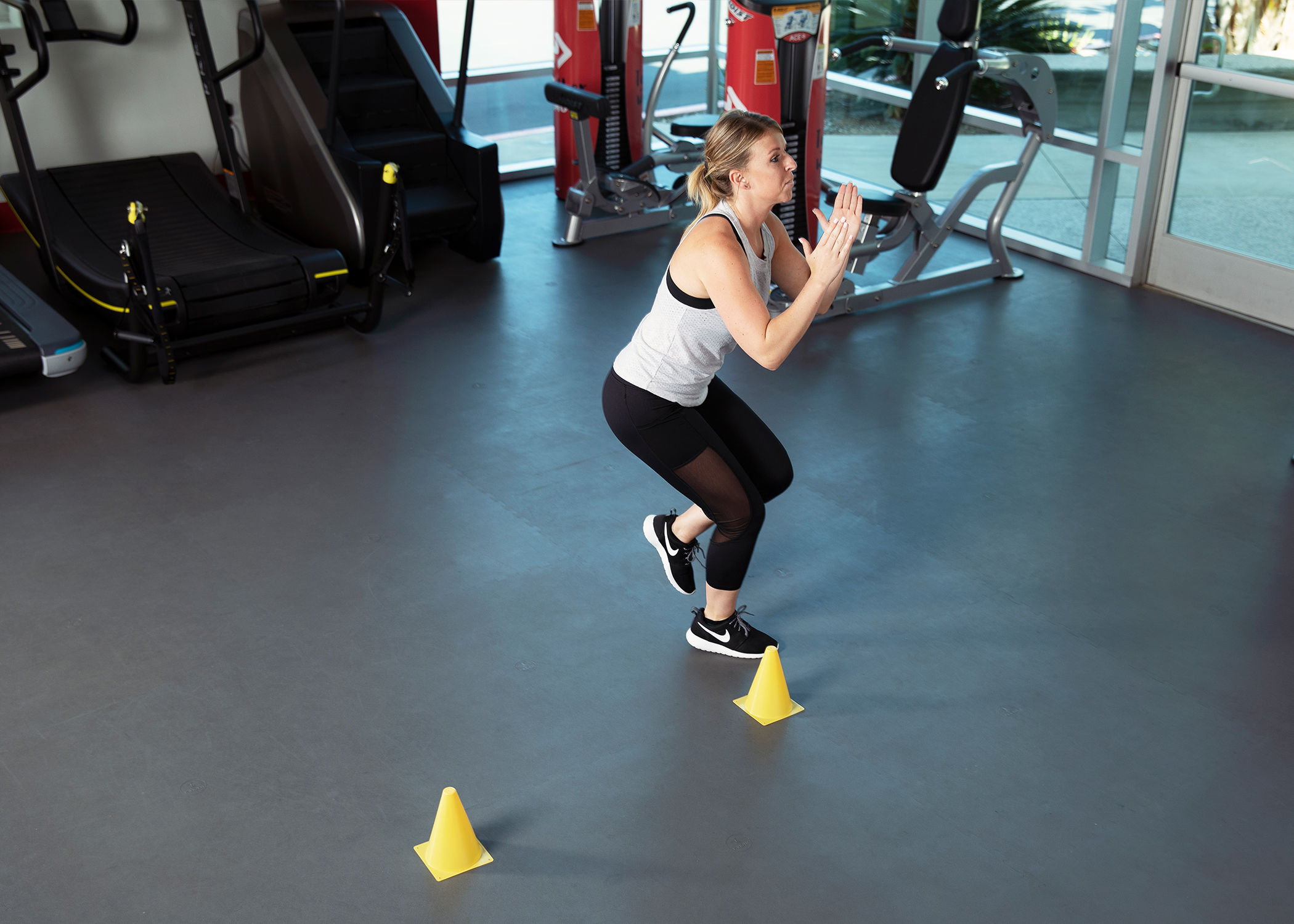
Dead Ball Slams
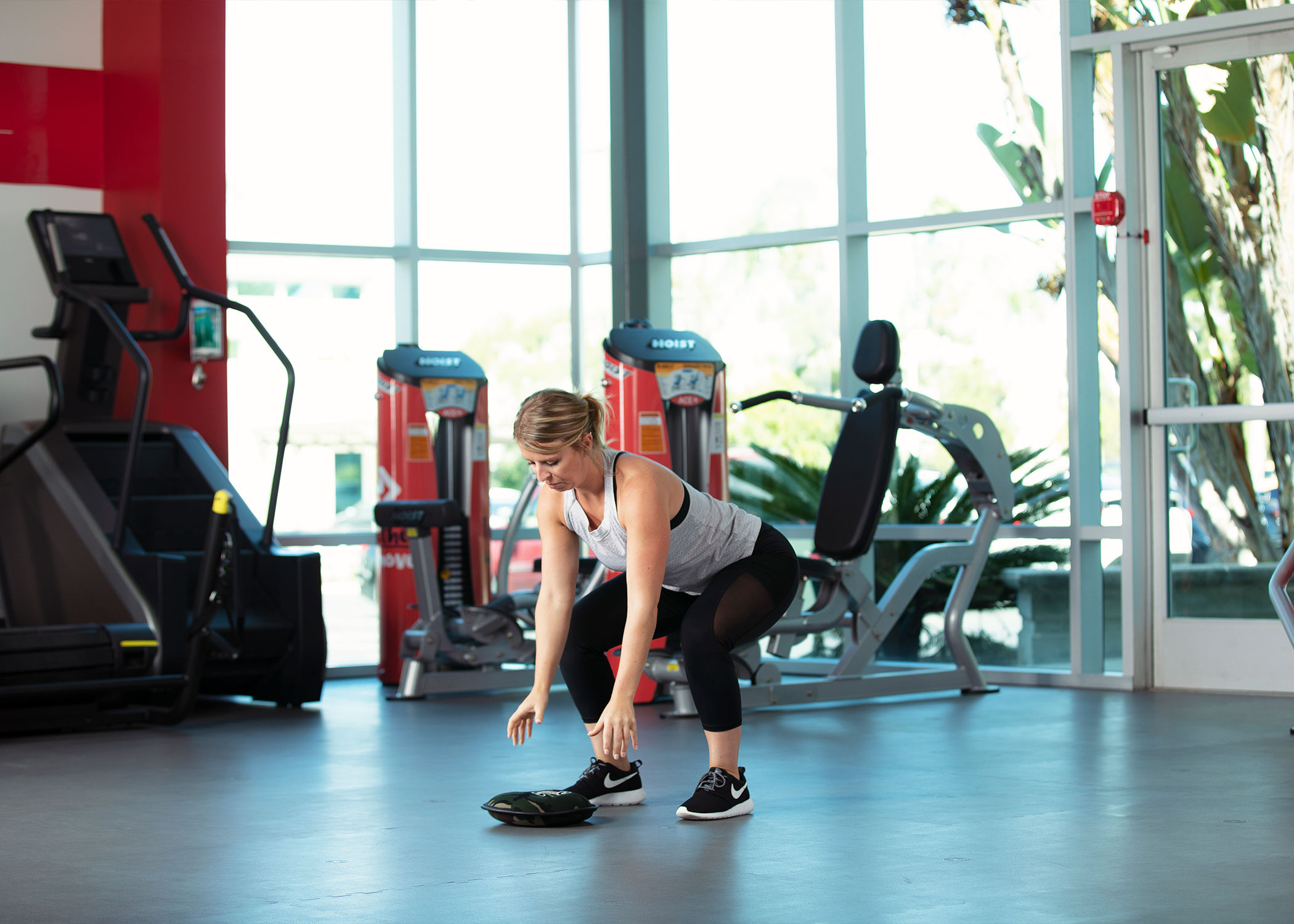
Reverse Lunge to Slam
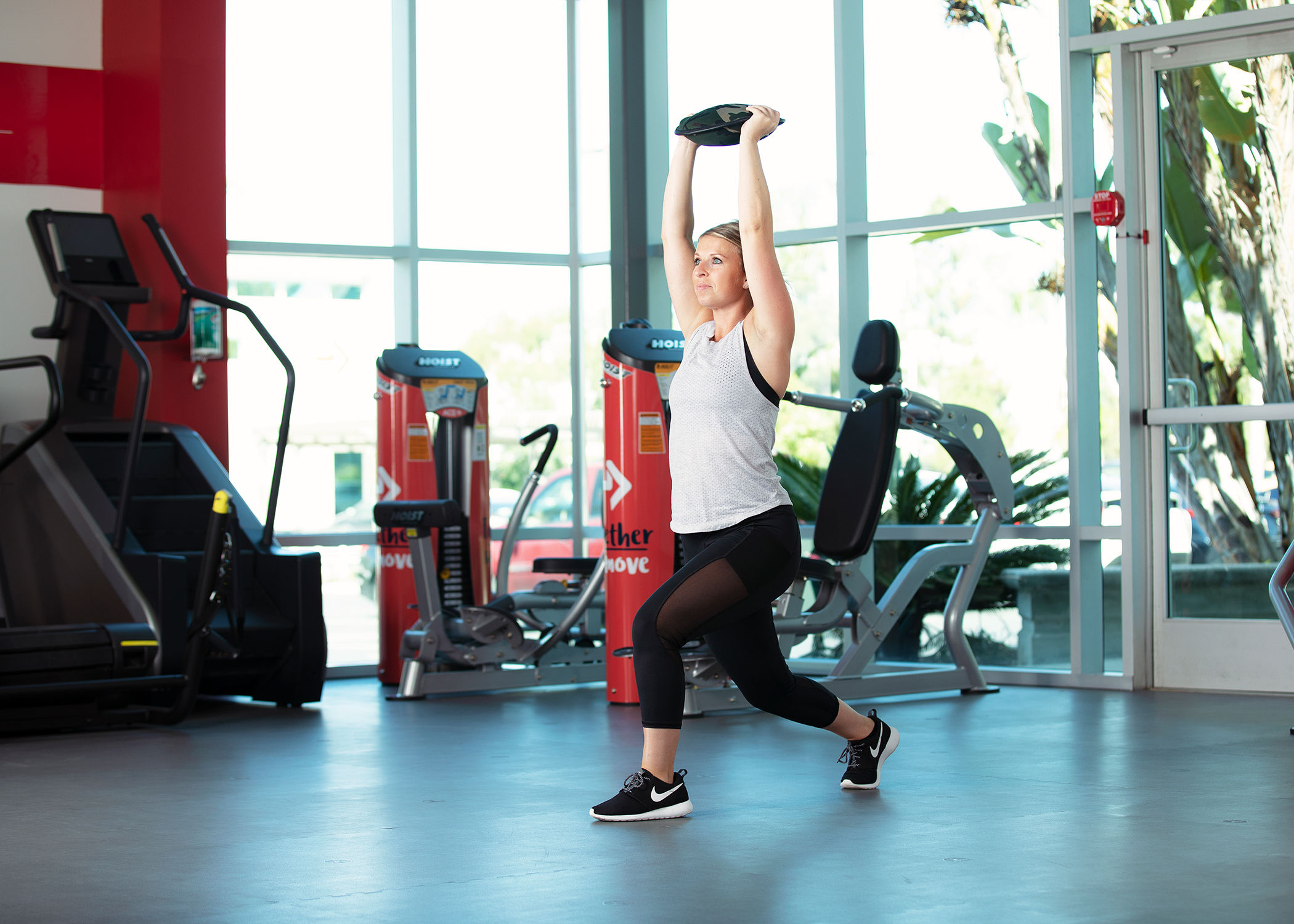
Rotational Chest Pass
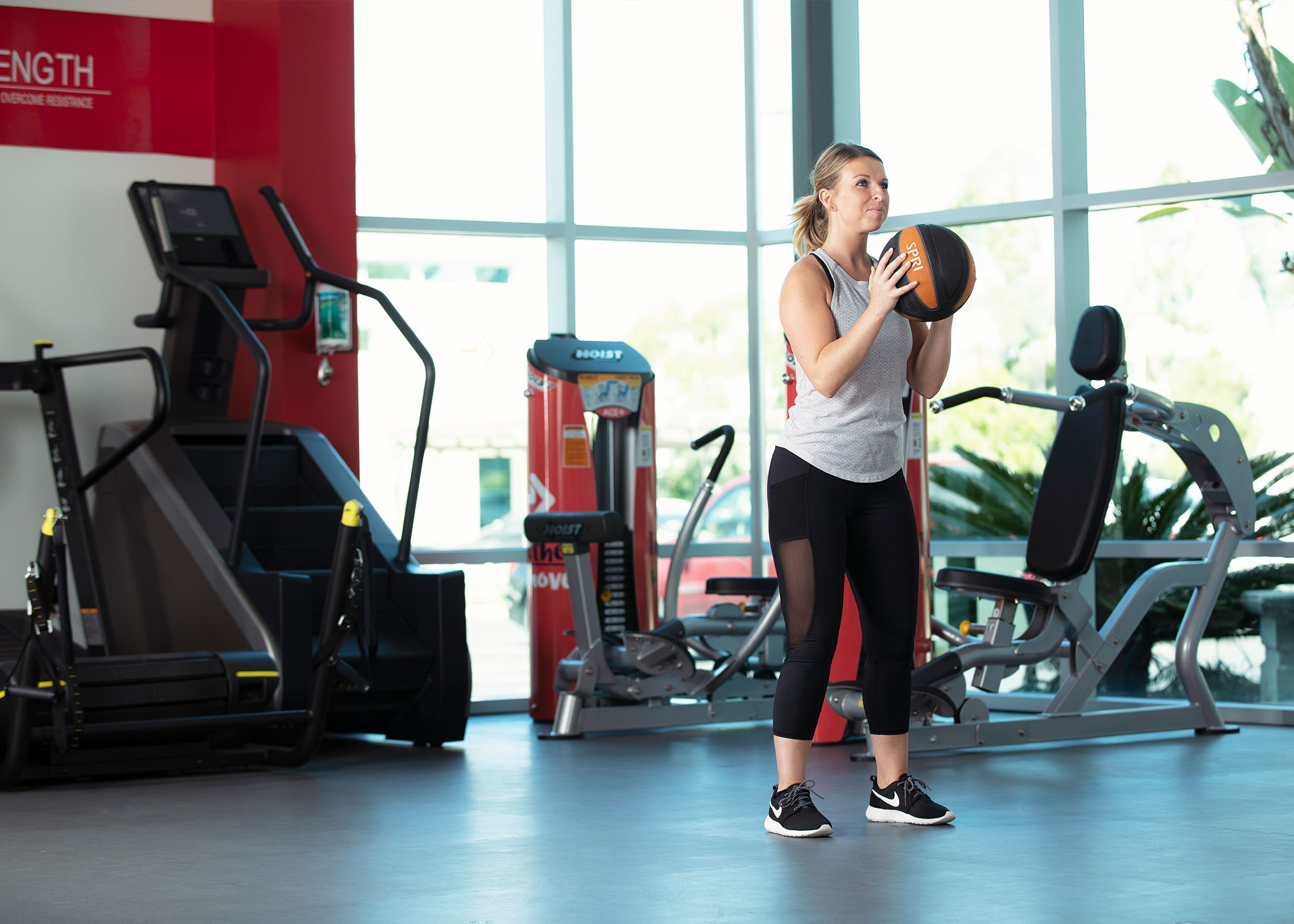
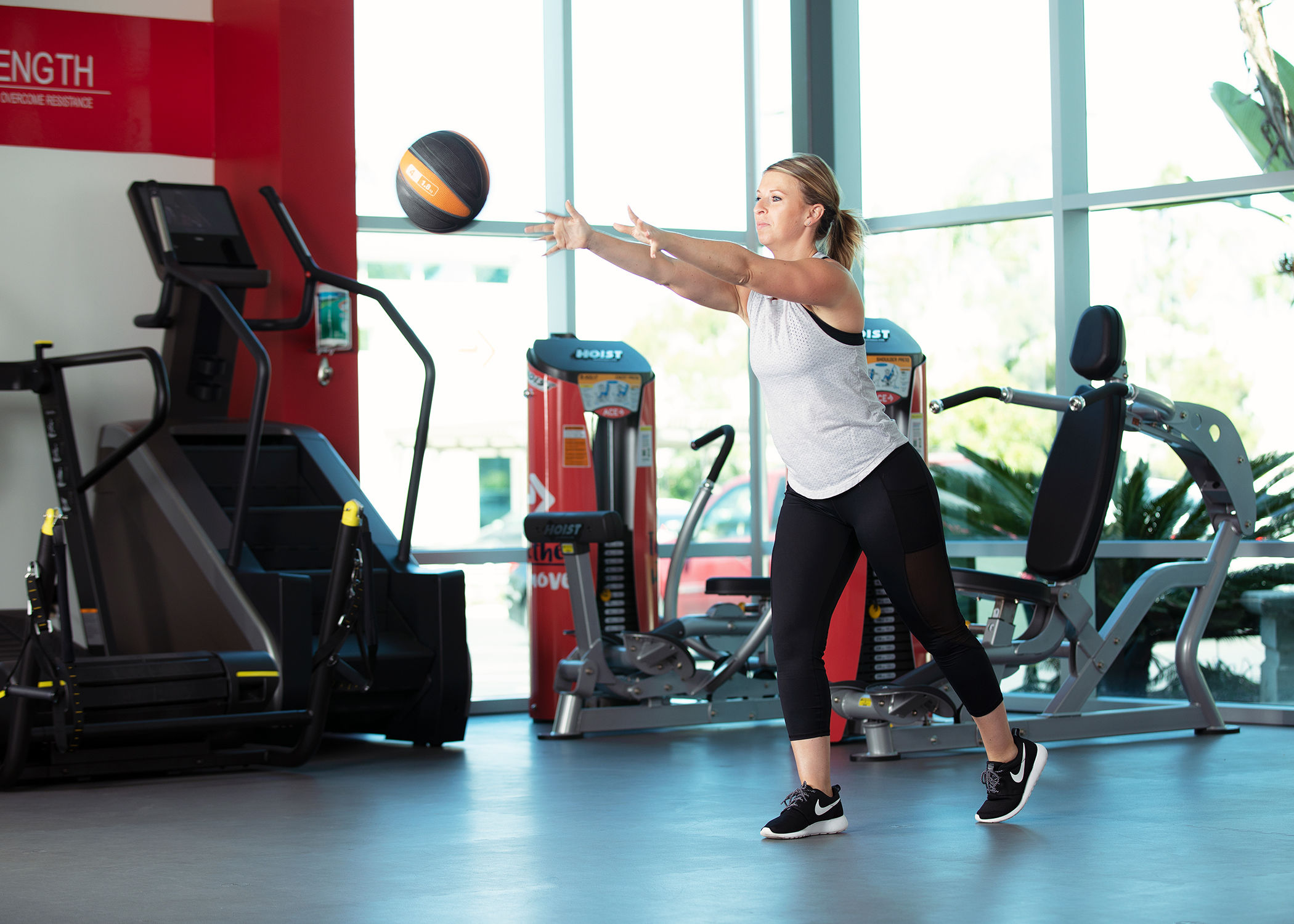
Explosive Crunches
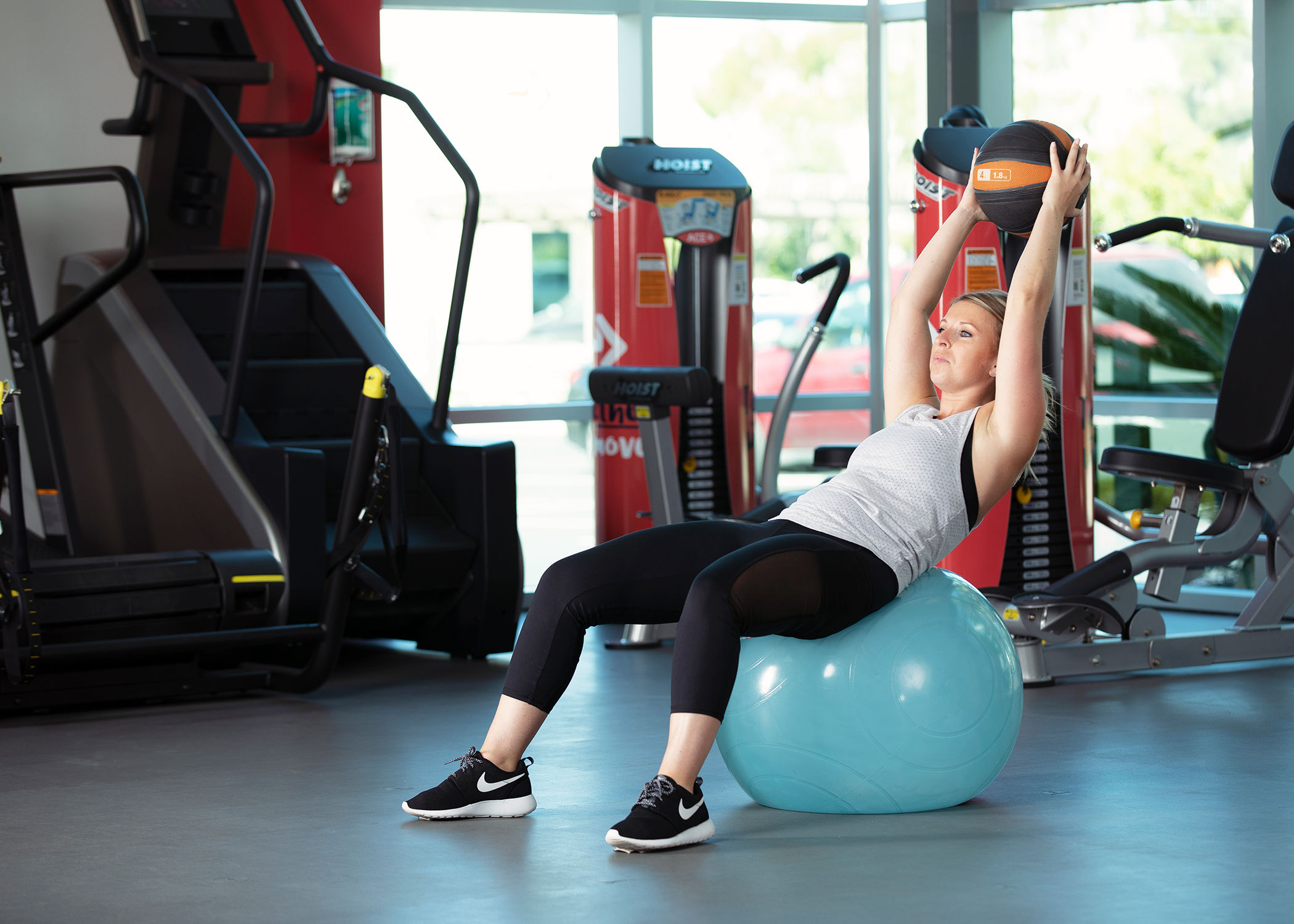
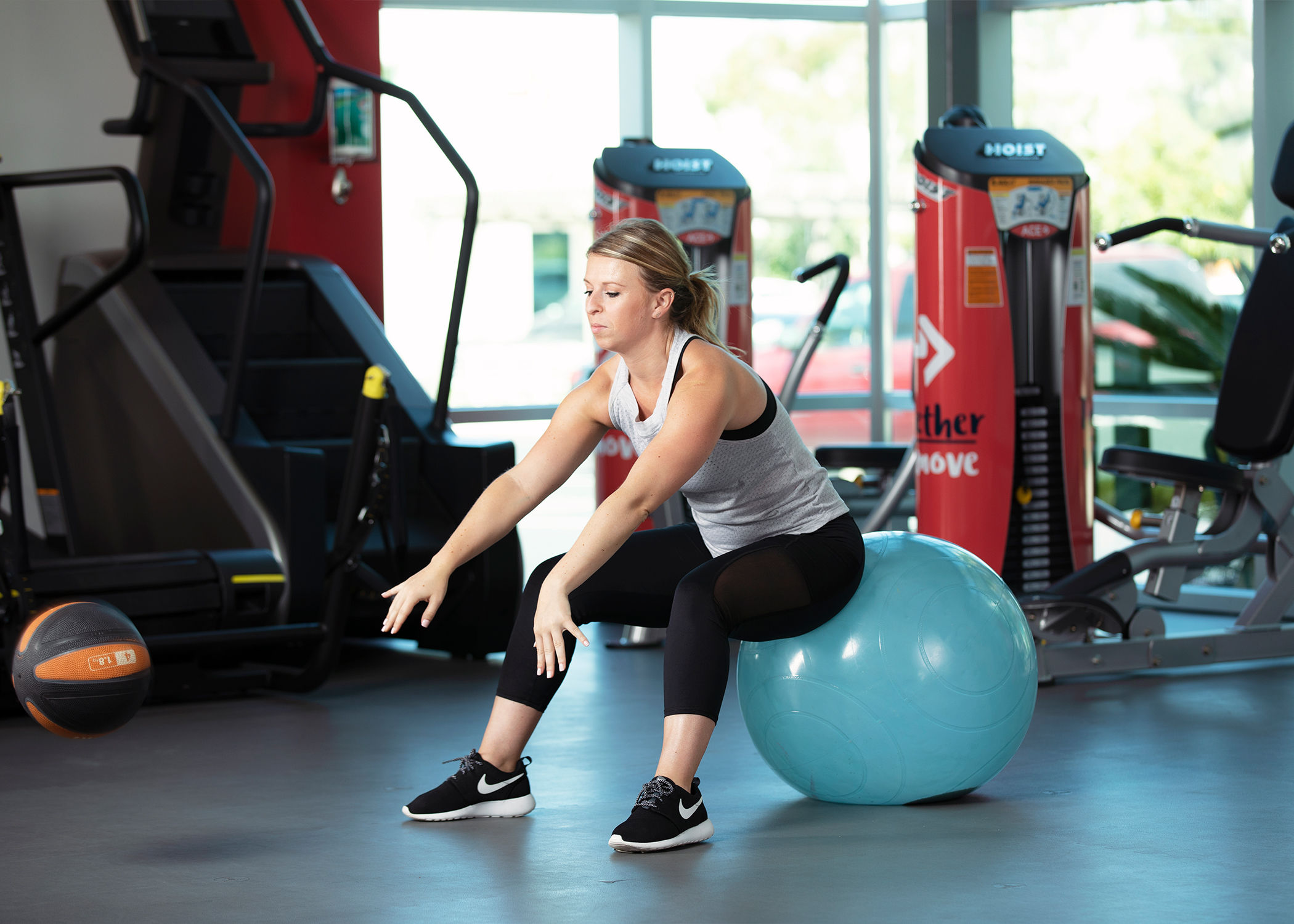
Want to help others lead happier and healthier lives? Become an ACE Certified Personal Trainer!




 by
by 




